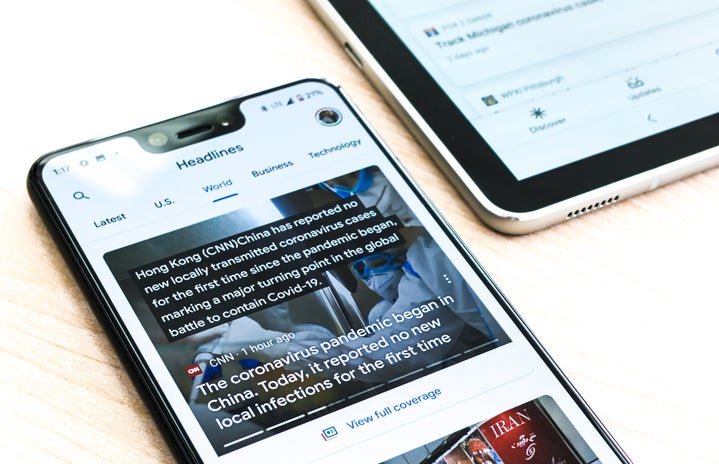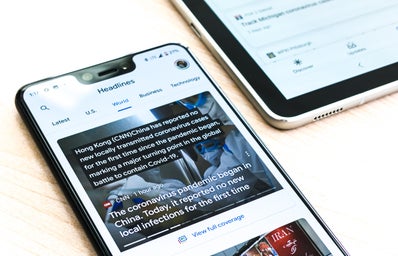“Reduce, reuse, recycle” is the phrase chanted by friends of the environment. Reduce the amount of single-use products, plastics and things to be thrown away that you use. Reuse items you already have, such as containers, bottles and other things. Recycling should be the last resort next to throwing things in the trash. Here are 10 environmentally-friendly alternatives to everyday products.
1. Reusable Cloth Pads
Pads and tampons are designed to be single-use products and easily thrown away but at what cost to our planet? According to Organicup “Tampons, pads and panty liners along with their packaging and individual wrapping generate more than 200,000 tonnes of waste per year and they all contain plastic.” Cloth pads are exactly what they sound like; they’re pads made out of cloth. Different companies use different materials, but you can get cloth pads made out of cotton, flannel, organic cotton, bamboo and some other fibers. Some pads are thick to keep the blood from soaking through and others have waterproof linings. They come in all sorts of shapes and sizes, not to mention colors. A lot of cloth pad companies have embraced the opportunity to create fun pads with all sorts of colors and designs. They also save you money in the long run. Most pads last an average of five years if washed and dried correctly and some even last longer than that!
2. Menstrual Cup
Cloth pads not your thing? That’s okay, there’s another environmentally-friendly alternative. Menstrual cups are reusable silicone cups that can offer leak-free protection for up to twelve hours. You can even go swimming with it in and it acts very similarly to a tampon. Other countries have been using cups for years, but they’re a fairly recent phenomenon in the United States. Now there are lots of companies to choose from as well. They can last for years and they’ll also save you money!
Via Allure
3. Reusable Water Bottles
I sincerely hope that everyone knows about reusable water bottles by now. Ideally, the bottle is made from a material other than plastic. Reusable bottles don’t just have to be used for water, they can hold any beverage. This is one of the easiest transitions to make towards becoming environmentally friendly. Ditch the plastic bottles in favor of a reusable bottle. Again, this is another item that will save you money. Refill your bottle from a water fountain (there are tons all over campus) instead of buying a plastic bottle from a vending machine every time you get thirsty.
4. Glass containers
Plastic is made up of harmful chemicals that take thousands of years to decompose. When it comes to food storage and lunch containers, I find that plastic also retains the color and smell of food and never really goes away. A great alternative to plastic containers are glass, metal, or ceramic containers. These are not only good for the environment, but they also can have multiple uses. Many glass containers are also oven safe, meaning you can put your meal-prep straight into the oven without having to use another dish. That’s one less thing to wash when you are doing the dishes!
Via Amazon
5. Cloth Bags / Reusable Grocery Bags
Plastic bags are one of the worst types of everyday plastic we use. Most plastic bags cannot be recycled and instead end up in the trash. Lots of plastic grocery bags also end up in the ocean, harming marine wildlife. Many countries around the world are banning plastic bags and some states and cities have started charging people for using plastic bags as an environmental tax. Paper bags are also not much better. While paper bags may be easier to decompose, they use more energy in manufacturing them than plastic bags. The best option is to skip the single-use bags altogether and instead use a reusable grocery bag. The ones shown above are foldable and can easily be tossed in your purse or car. Canvas and other cloth bags are also widely available.
Via Amazon
6. Environmentally-Friendly Toothbrushes
Oral care is important and keeping your teeth clean and healthy shouldn’t mean a negative impact on the environment. Regular toothbrushes are usually made of plastic and are thrown away every two-to-three months. If you have an electric toothbrush then you’re throwing away the head and you’re using energy to charge the brush. Luckily there are several eco-friendly toothbrushes available. Wooden and bamboo toothbrushes are popular, as well as aluminum and biodegradable options. You can also find toothbrushes made from recycled plastic. While it is difficult to find eco-friendly electric toothbrushes, you can find some with long battery lives and short charging times. Some electric toothbrushes are made out of silicone, which has fewer detrimental chemicals in it than ordinary plastic.
Via Life Without Plastic
7. Metal / Glass Straws
Plastic straws like plastic bags are one of the worst things for the environment. They’re single-use, not recyclable and they often end up in the ocean. There’s been a huge push in the past year to stop using plastic straws entirely. Metal and glass straws are popular reusable straws because they’re inexpensive and will last a long time. Some of these straws come with a silicone cap to protect the drinker from accidentally harming themselves with the straw. This is especially useful for children. For single-use straws, a popular option has been paper or biodegradable straws. This is one of the easiest switches to make and most people could simply forego the straw entirely and just drink from the glass. If you don’t already own one you can find them being sold in the JC as part of Mason’s effort to go straw-less. It’s nice to know though that there are options for people who need or would prefer straws.
Via Amazon
8. Bar Soap
Liquid soap has become increasingly popular over the years, but it can be harmful to people and the environment. A lot of liquid soaps are antibacterial, which sounds like a good thing, however, bacteria are evolving to be resistant to the antibacterial properties. This means that there are fewer ways in which to get rid of harmful bacteria. It can also kill good bacteria. Another issue with liquid soaps is that they often come in plastic containers that are casually thrown away at the end of their use. The answer to the environmentally-friendly alternative is so incredibly simple: bar soap. Bar soap is cheap, it lasts longer than liquid soap and it is usually better for the environment. Many local artisans make their own soaps, so you don’t have to just buy run-of-the-mill store-bought soap, you can also support local craft artists by buying locally made soaps.
Via Librestock
9. Beeswax paper
Plastic wrap or cling film is great for wrapping up food and helping to keep it fresh. The problem? It’s a single-use plastic that ends up in a landfill. The solution: beeswax paper. For most things, you might be able to keep the food item in a reusable storage container as I mentioned before, but some things either won’t fit or just can’t be put into a container and instead need to be wrapped. Luckily for us tree-huggers there is beeswax paper that can act just like plastic wrap. And if you love do-it-yourself projects then this is one for you! You can make your own beeswax paper fairly easily, check out this tutorial for instructions.
Via Bees Wrap
10. Bidet
You might be looking at this one and scratching your head. How is this environmentally friendly? In the United States, we use toilet paper to clean up our business and then we put that paper straight into the toilet to never be seen again. The problem with this is that toilet paper usually ends up in the sewage system or septic tank and then bacteria eat away at the paper and release carbon dioxide which contributes to greenhouse gases. A lot of countries ban toilet paper from going into the toilet but then it just ends up in the trash, which isn’t much of an improvement. The best option is to eliminate toilet paper altogether and a good way to do that and still keep clean is by using a bidet. In other countries people have them installed into their homes as separate devices but you can also buy a bidet attachment for as little as $19.99. Many bidets also have a dryer function, so after cleaning up one can dry themselves without paper. While bidets do use energy and water to function, many argue that the energy and water cost is acceptable in comparison to using toilet paper. Bidets are inexpensive, easy to use and often leave users cleaner than paper does. Some people might be uncomfortable with the idea at first, many people get used to it and prefer it over paper.
Via Amazon
Investing a little money to buy these products will not only make your wallet happy in the long run, but it will also have a positive impact on the environment. Think about trying these products and make sure to tell your friends, collegiettes!


